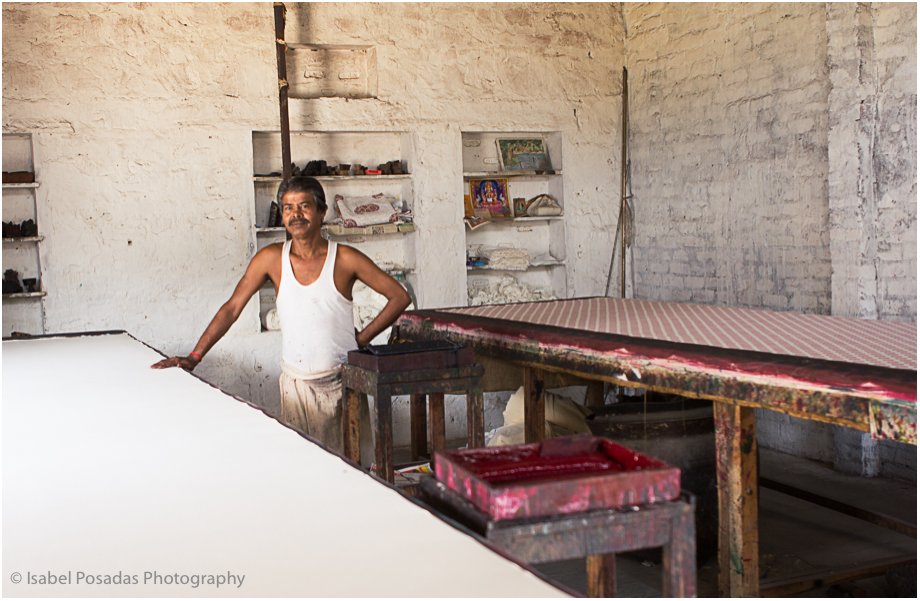As I mentioned in my previous post, my friend and I were lucky to observe almost every step of the block printing process.
This art has been handed down from generation to generation in the Chhippa family where almost every member is involved in the washing, dyeing and printing of clothes. While the printers are predominantly Hindus, the majority of dyers and block makers are Muslims.
This craft has survived in artisan families for centuries and nowadays is no exception, where despite the fast growing modern techniques like screen-printing, block printing still plays a primordial role in Indian´s textile industry.





The printing blocks or bunta are usually made of teak wood. The artisans make sure that the wood is seasoned and then carve the motifs on it. The design is first printed on paper and stuck on the block of wood. The artisan, then starts carving the wood with steel chisels of different widths and cutting surface. The motifs are carved on the base while the top has a handle. These handles are either carved out from the same wood or by a low cost wood attached to the surface with the help of nails. Each block has two or more holes drilled into the block for free air passage and also to allow release of excess color. Once the block is made, it is soaked in oil for 10-15 days to soften the grains. The life of these blocks are approximately 600-800 meters of printing.


Hand screen printing
Sanganer is a place where you can find both, block and screen printed textiles. Of course, block printing is a handicraft that deserves all my admiration but I was also quite impressed with the hand screen printing. This is an activity where no machines are involved and the precise and professional way these people work is awesome.
Due to lack of time, we were able to visit only one hand screen printing station. The textiles printed at that time had big floral designs, probably for future table cloths. However, some of the screen printed fabrics that were drying outside were so beautiful that could easily pass as block printed fabrics. Sometimes it´s almost impossible to know the difference between one to another.
The time required for the process of block printing, the decreasing clientele, the costs of labor and block carving, makes its costs much higher than the screen printing. Therefore and sadly, in a world where time, productivity and revenue are fundamental, the contemporary technique of screen printing is taking over a tradition of hundreds of years and those patterns which once were exclusive to hand block printing are now done by a much modern skill with less than half the cost.
Many people think that modernity is good and necessary for a country, but take a hard look and think that an ancient skill is in danger and might disappear in a few years because of it.
I am grateful and fortunate to be able to witness, appreciate and document how people still use their hands to make beautiful crafts in places where globalisation is a word that doesn´t exist and where, for a change, people are authentic and unique.
Hope you had enjoyed this post, feel free to comment and give me any feedback you would like.
Have a great week and until next time!




















